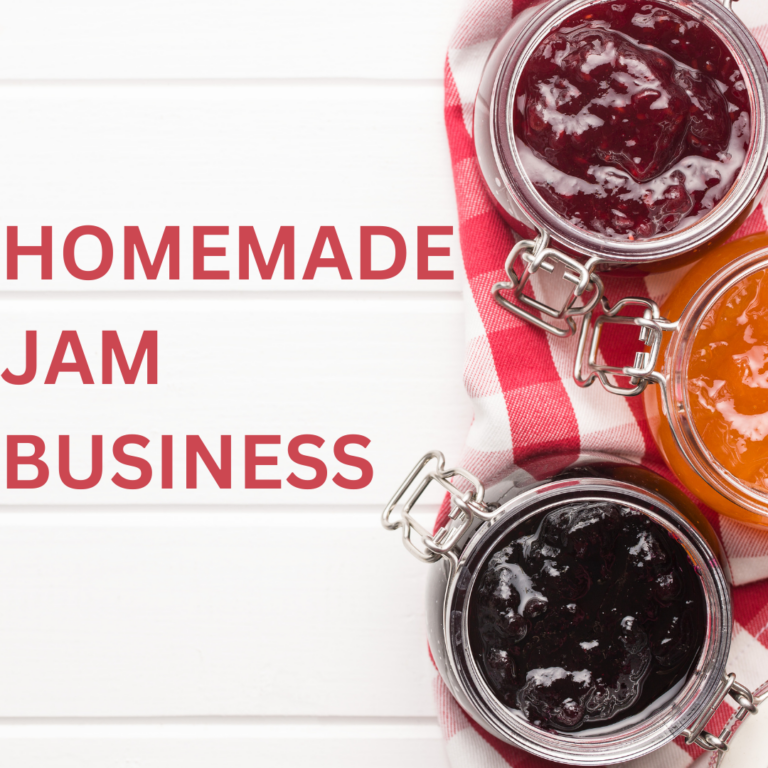Selling homemade jams, chutneys, and spreads at local markets is a fantastic business idea for food enthusiasts who love crafting unique and delicious products. The demand for artisanal, locally made food products is higher than ever, as consumers seek organic, natural, and preservative-free alternatives to mass-produced supermarket items.
Whether you are an experienced cook or a passionate home chef, turning your homemade preserves into a profitable business is possible with the right planning, marketing, and execution. This article will guide you through the essential steps to launch and grow your homemade jam and chutney business successfully.
Why Selling Homemade Jams and Chutneys is a Great Business Idea
The artisanal food industry has seen significant growth, driven by consumer demand for authentic, small-batch, and handcrafted products. Selling at farmers’ markets, craft fairs, and food festivals allows you to connect directly with customers, build a loyal following, and establish a strong brand.
Key Benefits of This Business
- Low startup costs – You can begin with minimal investment, using your home kitchen.
- High-profit margins – Jams and chutneys have inexpensive ingredients but can be sold at a premium.
- Flexible business model – Sell at markets, online, or through wholesale partnerships.
- Sustainable and eco-friendly – Use organic ingredients and sustainable packaging to appeal to conscious consumers.
- Scalable business – Expand from markets to online sales, catering, or collaborations with cafes and delis.
What You Need to Get Started
Equipment and Ingredients
To produce high-quality, flavorful preserves, you need the right tools and fresh ingredients.
Essential Equipment
- Large stainless steel pots – For boiling fruits and sugar.
- Glass jars with lids – Ensure they are sterilized for food safety.
- Canning equipment – Lids, jars, and a proper sealing system.
- Cutting boards and knives – For chopping fruits and vegetables.
- Measuring tools – Precision is key for consistency.
- Labels and branding materials – Custom labels for a professional look.
Best Ingredients for Jams and Chutneys
- Fruits – Strawberries, raspberries, blueberries, mangoes, apples.
- Vegetables – Tomatoes, onions, peppers (for chutneys).
- Natural sweeteners – Honey, maple syrup, organic cane sugar.
- Spices and herbs – Cinnamon, ginger, cloves, chili, garlic.
- Preservatives – Lemon juice, vinegar, natural pectin for shelf stability.
Legal Requirements and Food Safety
Before selling food products, you must comply with local health regulations and food safety standards.
- Obtain the necessary licenses and permits – These may include a food handler’s permit and local health department approvals.
- Check cottage food laws – Some countries allow homemade food sales without commercial kitchen requirements.
- Labeling requirements – Labels should include ingredients, allergens, expiration date, and nutritional information.
- Food safety certifications – Some markets require sellers to complete a basic food hygiene course.
Finding the Best Markets to Sell Your Products
Choosing the right markets and locations is key to maximizing your sales.
Types of Markets to Sell Your Jams and Chutneys
- Farmers’ markets – Great for targeting health-conscious and local food lovers.
- Craft fairs and artisan markets – Attracts customers who appreciate small-batch, handcrafted foods.
- Food festivals and gourmet fairs – Higher foot traffic and willingness to spend on premium products.
- Holiday and Christmas markets – People buy jams and chutneys as gifts.
- Local grocery stores and cafés – Wholesale partnerships can expand your reach.
How to Secure a Market Stall
- Research local markets – Check vendor fees, location, and foot traffic.
- Apply early – Some markets have limited spaces and require applications in advance.
- Prepare samples – Market managers often request product samples before approval.
- Ensure professional presentation – A well-designed stall with attractive packaging draws customers.
Pricing and Profit Margins
To maximize your earnings, you need to price your products competitively while maintaining healthy margins.
Pricing Strategy
The cost of producing homemade jams and chutneys is relatively low, so you can achieve high profit margins.
| Product | Cost to Produce | Selling Price | Profit Margin |
|---|---|---|---|
| Small Jar (200ml) | €1 – €2 | €5 – €8 | 60% – 80% |
| Large Jar (500ml) | €2.50 – €4 | €10 – €15 | 70% – 85% |
| Gift Set (3 Jars) | €6 – €8 | €20 – €30 | 65% – 75% |
Branding and Marketing Strategies
Create a Unique Brand
Your brand should communicate:
- Handcrafted, homemade quality.
- Locally sourced ingredients.
- Unique flavors and creative recipes.
Use eco-friendly packaging, glass jars, and hand-written labels to enhance authenticity.
Leverage Social Media and Digital Marketing
- Instagram and Facebook – Share behind-the-scenes videos of your jam-making process.
- TikTok and YouTube – Post recipe ideas featuring your products.
- Website and online store – Sell directly via Shopify, Etsy, or a simple WordPress store.
- Giveaways and promotions – Offer free samples at markets to encourage purchases.
Customer Engagement and Loyalty
- Collect email addresses to inform customers about new flavors.
- Offer discount codes for returning customers.
- Partner with food bloggers and influencers for exposure.
Expanding Your Business
Once your market stall is successful, you can scale up your business:
- Sell wholesale to cafes, gourmet stores, and gift shops.
- Launch an online store and ship nationwide.
- Offer jam-making workshops for extra revenue.
- Develop a subscription box with seasonal flavors.
- Expand to organic and vegan-friendly preserves.
Conclusion
Starting a homemade jam and chutney business is a low-investment, high-profit opportunity that allows you to turn your passion for food into a profitable venture.
Key Takeaways:
- Start small at farmers’ markets and local events.
- Use fresh, organic ingredients and unique recipes.
- Price competitively while ensuring strong profit margins.
- Brand your products with premium packaging and eco-friendly materials.
- Leverage social media and online sales to grow your business.
With the right strategy, dedication, and passion, you can build a thriving artisanal food brand and enjoy a rewarding career as a homemade jam and chutney entrepreneur.



